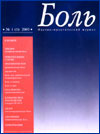New technologies for treating back pain & sciatica
Low back pain is one of the leading causes of lost work time, second only to the common cold. It affects 65-85% of the population of the United States at some point in their lives. The most common cause is a sprain, strain or spasm usually brought on by poor lifting technique, improper posture, bad back habits, or an unhealthy ergonomic environment. Another common cause is disc problems, brought on by injury, wear and tear, or age. Other causes include a narrowing of the spinal or nerve canals, arthritic or degenerative changes in the small joints of the back, osteoporotic fractures, and sometimes even infections or tumors.
The exciting new technology we will cover here refers to easing back pain and sciatica that is caused by disc problems. In the United States, it is estimated that about 7 million low back pain cases are related to disc problems. It is important to note that these new technologies are unproven, so it is imperative to use a healthy dose of caution. However, given that the treatment for disc problems are invasive surgeries, I felt it worthwhile to take a look at these new treatments because they are much less invasive, and they look quite promising.
What do spinal discs do?
Discs act as the shock absorbers between the vertebrae of the spine; they are tough, fibrous, outer-shelled discs (the annulus) that are filled with gel (the nucleus). In a healthy back, discs allow the spine to be flexible. Unfortunately, time, trauma, and inherent weakness in a disc can lead to degeneration of the annulus causing the nucleus of the disc to bulge out or even herniate (extrude) through the wall of the annulus. These injuries can actually be verified by MRI or CT scans. Interestingly enough, scans can sometimes show such abnormalities in patients that report no back pain, but we have yet to understand why. At any rate, a degenerated disc can be the source of back pain, and if the bulging disc is pressing on a spinal nerve root, the pain can radiate into the leg causing sciatica.
Until now treatment options have been limited. Physical therapy can help to ease the painful muscles which struggle to cope with the spine problem, and PT can also help to prevent abnormal stresses on the spine. Epidural steroid injections can reduce the inflammation in the area and are often helpful, but the pain tends to recur if the underlying problem is severe. For acute problems, the only remaining treatments have been to surgically remove part of the disc, or to surgically fuse the vertebrae to remove pressure on the disc.
Now, two as yet unproven minor procedures are available that may help with the treatment of back pain and sciatica: Intradiscal electrothermoplasty (IDET), and Radiofrequency Discal Nucleoplasty (Coblation Nucleoplasty).
Intradiscal Electrothermoplasty (IDET)
This procedures involves the insertion of a needle into the affected disc with the guidance of an x-ray machine. A wire is then threaded down through the needle and into the disc until it lies along the inner wall of the annulus. The wire is then heated which destroys the small nerve fibers that have grown into the cracks and have invaded the degenerating disc. The heat also partially melts the annulus which triggers the body to generate new reinforcing proteins in the fibers of the annulus. A study of fifty-three patients with discogenic back pain was published in the October issue of the journal, “Spine.” Depending on the stringency of criteria used, the success rate of IDET may be as low as 23% or as high as 60%.
Radiofrequency Discal Nucleoplasty (Coblation Nucleoplasty)
Nucleoplasty is even newer than IDET; it has been available for only a few months. Similar to the IDET procedure, a needle is inserted into the disc. Instead of a heating wire, a special radiofrequency probe is inserted through the needle into the disc. This probe generates a highly focused plasma field with enough energy to break up the molecular bonds of the gel in the nucleus, essentially vaporizing some of the nucleus. The result is that 10-20% of the nucleus is removed which decompresses the disc and reduces the pressure both on the disc and the surrounding nerve roots. This technique may be more beneficial for sciatica type of pain than the IDET, since nucleoplasty can actually reduce the disc bulge which is pressing on a nerve root. The high energy plasma field is actually generated at relatively low temperatures, so danger to surrounding tissues is minimized.
These new techniques are exciting. They offer the possibility of treating discogenic low back pain and sciatica with much less trauma and risk than surgery, but we must remember that these are still unproven technologies. I’ll keep you posted on how research on these techniques develops, but it’s great that we have some new tools to help people with this often debilitating problem.
Steven Richeimer, M.D.
Richeimer Pain Medical Group
web: http://www.helpforpain.com/






